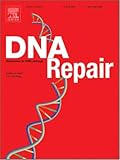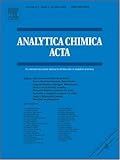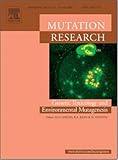|
|
Help |
| Home - Science - Saccharomyces (Books) | |
e99 Online Shopping Mall
|
|
Help |
| Home - Science - Saccharomyces (Books) | |
| Back | 61-80 of 100 | Next 20 |
click price to see details click image to enlarge click link to go to the store
| 61. Neue Wege zur Bernsteins"aureproduktion mit der Hefe Saccharomyces cerevisiae by Andreas Raab | |
| Paperback:
Pages
(2010-05-30)
-- used & new: US$54.25 (price subject to change: see help) Asin: B0043MG6IG Canada | United Kingdom | Germany | France | Japan | |
| 62. Genetics (A Periodical Record of Investigations Bearing on Heredity and Variation) March 2002: Analysis of Conditional Mutations in the Saccharomyces Cerevisiae by Genetics | |
| Paperback:
Pages
(2002)
Asin: B002ISE5DK Canada | United Kingdom | Germany | France | Japan | |
| 63. Cr(III) removal and recovery from Saccharomyces cerevisiae [An article from: Chemical Engineering Journal] by A.I. Ferraz, T. Tavares, J.A. Teixeira | |
 | Digital:
Pages
(2004-12-15)
list price: US$8.95 -- used & new: US$8.95 (price subject to change: see help) Asin: B000RR4NRW Canada | United Kingdom | Germany | France | Japan |
|
Editorial Review Product Description | |
| 64. Recombination between retrotransposons as a source of chromosome rearrangements in the yeast Saccharomyces cerevisiae [An article from: DNA Repair] by P.A. Mieczkowski, F.J. Lemoine, T.D. Petes | |
 | Digital:
Pages
(2006-09-08)
list price: US$14.95 -- used & new: US$14.95 (price subject to change: see help) Asin: B000P6OTKG Canada | United Kingdom | Germany | France | Japan |
|
Editorial Review Product Description | |
| 65. Zur Rolle der Translokasen der mitochondrialen Membranen beim Import von Vorstufenproteinen in der Hefe saccharomyces cerevisiae by Thomas Krimmer | |
| Paperback:
Pages
(2000-12-20)
-- used & new: US$64.75 (price subject to change: see help) Asin: B001T4CM7A Canada | United Kingdom | Germany | France | Japan | |
| 66. The effect of oxidative metabolism on spontaneous Pol@z-dependent translesion synthesis in Saccharomyces cerevisiae [An article from: DNA Repair] by B.K. Minesinger, A.L. Abdulovic, T.M. Ou, Jinks-Ro | |
 | Digital:
Pages
list price: US$8.95 -- used & new: US$8.95 (price subject to change: see help) Asin: B000RR6KYG Canada | United Kingdom | Germany | France | Japan |
|
Editorial Review Product Description | |
| 67. Effects of selected by-products of an acid hydrolyzate on cell growth and ethanol fermentation by Saccharomyces cerevisiae.: An article from: Journal of the Mississippi Academy of Sciences by Jun Gao, Yi Zhang, Jennifer Ntoni, Maria F.T. Begonia, Ken S. Lee, Lenore Hicks, Wayne W. Hwang, Huey-Min Hwang | |
| Digital: 12
Pages
(2006-10-01)
list price: US$9.95 -- used & new: US$9.95 (price subject to change: see help) Asin: B000MDFPKA Canada | United Kingdom | Germany | France | Japan | |
|
Editorial Review Product Description | |
| 68. Solid phase extraction using immobilized yeast Saccharomyces cerevisiae for determination of palladium in road dust [An article from: Analytica Chimica Acta] by B. Godlewska-Zylkiewicz, M. Kozlowska | |
 | Digital:
Pages
(2005-05-10)
list price: US$10.95 -- used & new: US$10.95 (price subject to change: see help) Asin: B000RR3I6Y Canada | United Kingdom | Germany | France | Japan |
|
Editorial Review Product Description | |
| 69. Effect of an acid hydrolyzate of southern pine softwood on the growth and fermentation ability of yeast Saccharomyces cerevisiae.: An article from: Journal of the Mississippi Academy of Sciences by Yi Zhang, Huey-Min Hwang, Maria F.T. Begonia, Ken Lee, Kui Zeng | |
| Digital: 11
Pages
(2005-04-01)
list price: US$5.95 -- used & new: US$5.95 (price subject to change: see help) Asin: B000ALPF22 Canada | United Kingdom | Germany | France | Japan | |
|
Editorial Review Product Description | |
| 70. Toxicity on crustaceans and endocrine disrupting activity on Saccharomyces cerevisiae of eight alkylphenols [An article from: Chemosphere] by M. Isidori, M. Lavorgna, A. Nardelli, A. Parrella | |
 | Digital: 8
Pages
(2006-06-01)
list price: US$10.95 -- used & new: US$10.95 (price subject to change: see help) Asin: B000RR9I9A Canada | United Kingdom | Germany | France | Japan |
|
Editorial Review Product Description | |
| 71. Identifizierung von Regulationspunkten des Ergosterolbiosyntheseweges und Etablierung des 7-Dehydrocholesterolbiosyntheseweges in der Hefe Saccharomyces cerevisiae by Markus Veen | |
| Paperback:
Pages
(2003-02-20)
-- used & new: US$64.75 (price subject to change: see help) Asin: B001T4EHS2 Canada | United Kingdom | Germany | France | Japan | |
| 72. Saccharomyces boulardii reduces the frequency and duration of acute diarrhea in children.(ABSTRACTS OF INTEREST)(Clinical report): An article from: Original Internist by Donald Brown | |
| Digital: 2
Pages
(2007-06-01)
list price: US$9.95 -- used & new: US$9.95 (price subject to change: see help) Asin: B000VE5S4S Canada | United Kingdom | Germany | France | Japan | |
|
Editorial Review Product Description | |
| 73. Topoisomerase deficiencies subtly enhance global genomic repair of ultraviolet-induced DNA damage in Saccharomyces cerevisiae [An article from: DNA Repair] by S.D. Cline, P.C. Hanawalt | |
 | Digital: 6
Pages
(2006-05-10)
list price: US$10.95 -- used & new: US$10.95 (price subject to change: see help) Asin: B000RR8GCU Canada | United Kingdom | Germany | France | Japan |
|
Editorial Review Product Description | |
| 74. Antigenotoxic effects of three essential oils in diploid yeast (Saccharomyces cerevisiae) after treatments with UVC radiation, 8-MOP plus UVA and MMS [An ... Toxicology and Environmental Mutagenesis] by F. Bakkali, S. Averbeck, D. Averbeck, A. Zhiri | |
 | Digital: 11
Pages
(2006-07-14)
list price: US$10.95 -- used & new: US$10.95 (price subject to change: see help) Asin: B000RR95YS Canada | United Kingdom | Germany | France | Japan |
|
Editorial Review Product Description | |
| 75. Mgs1 and Rad18/Rad5/Mms2 are required for survival of Saccharomyces cerevisiae mutants with novel temperature/cold sensitive alleles of the DNA polymerase ... subunit, Pol31 [An article from: DNA Repair] by N.D. Vijeh Motlagh, M. Seki, D. Branzei, Enomoto | |
 | Digital:
Pages
(2006-12-09)
list price: US$10.95 -- used & new: US$10.95 (price subject to change: see help) Asin: B000PC08OG Canada | United Kingdom | Germany | France | Japan |
|
Editorial Review Product Description | |
| 76. Contribution of Msh2 and Msh6 subunits to the asymmetric ATPase and DNA mismatch binding activities of Saccharomyces cerevisiae Msh2-Msh6 mismatch repair protein [An article from: DNA Repair] by E. Antony, S. Khubchandani, S. Chen, M. Hingorani | |
 | Digital:
Pages
list price: US$8.95 -- used & new: US$8.95 (price subject to change: see help) Asin: B000RR6KU0 Canada | United Kingdom | Germany | France | Japan |
|
Editorial Review Product Description | |
| 77. Journal of Bacteriology November 1999, Volume 181, Number 22: Regulation of Ribosome Biosynthesis in Escherichia Coli and Saccharomyces Cerevisiae; Diversity and Common Principles by American Society For Microbiology | |
| Paperback:
Pages
(1999)
Asin: B002K4344I Canada | United Kingdom | Germany | France | Japan | |
| 78. Suppression of gross chromosomal rearrangements by the multiple functions of the Mre11-Rad50-Xrs2 complex in Saccharomyces cerevisiae [An article from: DNA Repair] by S. Smith, A. Gupta, R.D. Kolodner, K. Myung | |
 | Digital:
Pages
(2005-05-02)
list price: US$10.95 -- used & new: US$10.95 (price subject to change: see help) Asin: B000RR393Q Canada | United Kingdom | Germany | France | Japan |
|
Editorial Review Product Description | |
| 79. Saccharomyces: Webster's Timeline History, 1996 - 2004 by Icon Group International | |
 | Paperback: 356
Pages
(2010-05-28)
list price: US$28.95 -- used & new: US$28.95 (price subject to change: see help) Asin: B0043D2M24 Canada | United Kingdom | Germany | France | Japan |
|
Editorial Review Product Description | |
| 80. Nucleotide excision repair deficiency causes elevated levels of chromosome gain in Saccharomyces cerevisiae [An article from: DNA Repair] by N.G. Howlett, R.H. Schiestl | |
 | Digital:
Pages
(2004-02-03)
list price: US$8.95 -- used & new: US$8.95 (price subject to change: see help) Asin: B000RQZM5K Canada | United Kingdom | Germany | France | Japan |
|
Editorial Review Product Description | |
| Back | 61-80 of 100 | Next 20 |